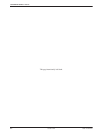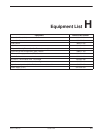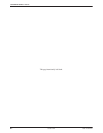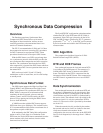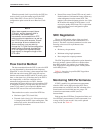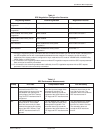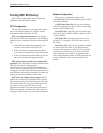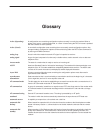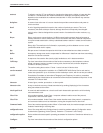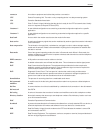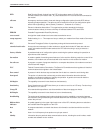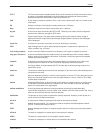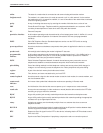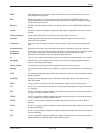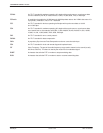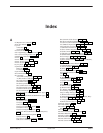
COMSPHERE 3800Plus Modems
Glossary-2 October 1998 3980-A2-GB30-40
To adjust to varying VF line conditions by changing the data rate to a higher or lower rate after
connection. The lowest rate the modem autorates to is 4800 bps; the highest possible rate
depends on the modulation the modems connected with. In V.34, the modems may autorate
asymmetrically.
A common bus at the rear of a nest or chassis that provides communications and power to
circuit card slots.
A unit of signaling speed that is equal to the number of symbols per second. This is not
necessarily the same as bits per second, although the terms are frequently interchanged.
Latin for
twice
. Used to distinguish the second version of a standard from other versions; e.g.,
V.32bis.
Binary synchronous communications. An IBM communications protocol that has become an
industry standard. It uses a defined set of control characters and control-character sequences
for synchronized transmission of binary-coded data between stations in a data communications
system.
Binary digit. The smallest unit of information, representing a choice between a one or a zero
(sometimes called mark or space).
Bits per second. Indicates the speed at which bits are transmitted across a data connection.
A temporary storage area used to compensate for differences in data flow rate when transmitting
data from one device to another.
A sequence of successive bits (usually eight) handled as a unit in data transmission.
Top-Level menu branch that contains all the functions necessary to dial telephone numbers
stored in directory locations, answer incoming calls, disconnect calls, and save telephone
numbers to directory locations.
The rack mounting that contains 17 slots: 1 control slot and 16 device slots.
A device that is designed for installation in a COMSPHERE 3000 Series Carrier and used at
central-site operations. Up to 16 devices can be installed per carrier, with six carriers per cabinet.
Consultative Committee on International Telegraphy and Telephony. An advisory committee
established by the United Nations to recommend communications standards and policies. It was
renamed ITU in March 1993.
A letter, figure, number, punctuation, or other symbol.
A way to check the accuracy of data transmission by sending (displaying) all the characters
being transmitted to the monitor.
A screw lock tab installed over a circuit card’s latch release tab to prevent the unit from being
removed without a tool.
A fax modem standard. Under Class 1 computer software handles most of the protocol,
compression, and conversion tasks.
A fax modem standard. Under Class 2 the modem handles most of the protocol, compression,
and conversion tasks as well as modulation, leaving the computer free for other work.
One of two modem operating modes. When in Command mode, the modem accepts commands
instead of transmitting or receiving data.
One of five areas within the Configure branch containing modem settings. Configuration areas
include Active (Operating), Active (Saved), Customer 1, Customer 2, and Factory.
Device software that sets specific operating parameters for the device. Sometimes referred to as
straps.
Top-Level menu branch that contains all the device’s configuration options.
autorate
backplane
baud
bis
bisync
bit
bps
buffer
byte
Call Setup
carrier
carrier-mounted
CCITT
character
character echo
circuit pack lock
Class 1 fax
Class 2 fax
Command mode
configuration area
configuration option
Configure



